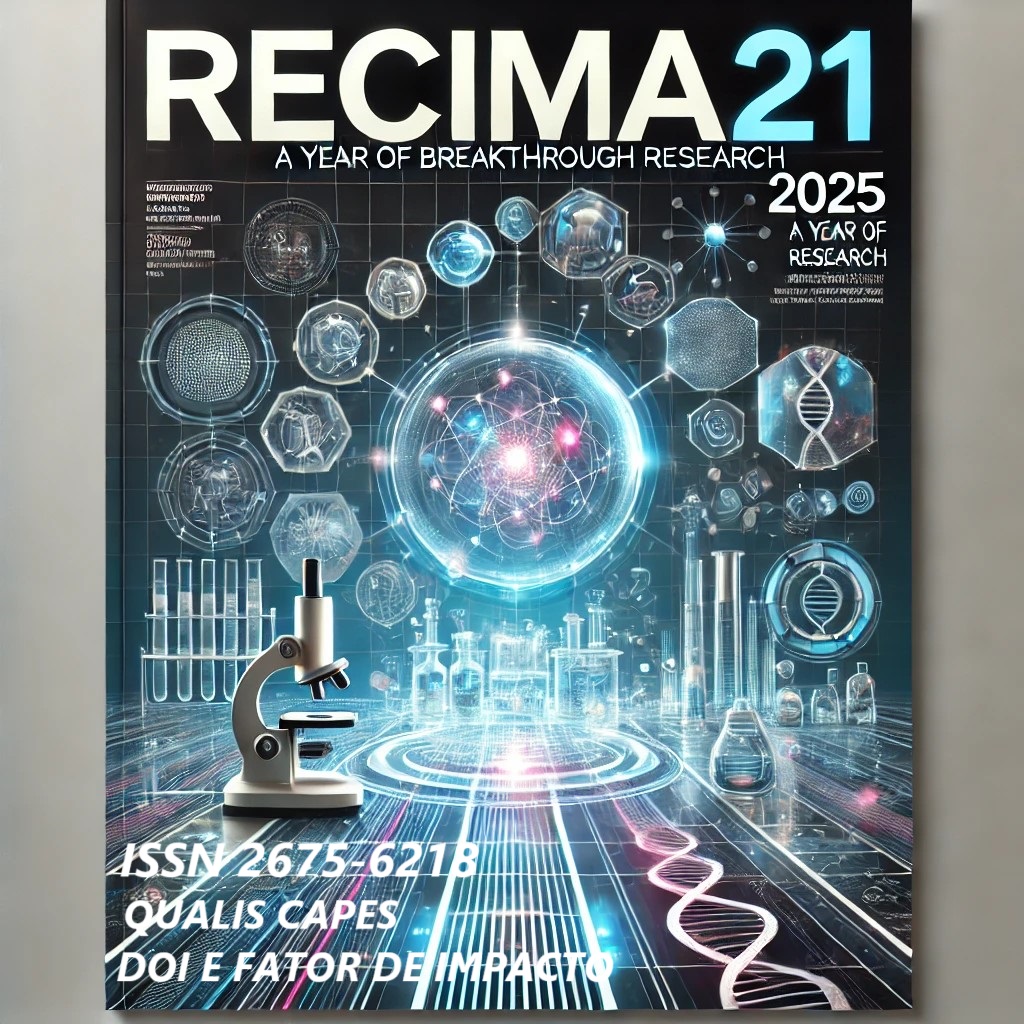EL IMPACTO DE LAS DIMENSIONES AFECTIVAS DE LA CONFIANZA Y EL RIESGO EN LA CONVERSIÓN DE LEADS EN EL ENTORNO WEB: VALIDACIÓN DE MODELOS DE MEDICIÓN EMOCIONAL POR RESPUESTA IMPLÍCITA EN EL ENTORNO ONLINE
DOI:
https://doi.org/10.47820/recima21.v6i4.6346Palabras clave:
Neuro Diseño, Confianza emocional-Riesgo afectivo, Embudo de ventas, Página de destino, Diseño WebResumen
El objetivo de este estudio es investigar cómo estos problemas emocionales relacionados con la confianza y los elementos locos del neurodiseño pueden afectar la conversión de visitantes en clientes potenciales en una página de destino. La idea central es comprender cómo la respuesta emocional relacionada a las decisiones tomadas por los individuos en el entorno web impacta en un mejor desempeño en las etapas iniciales del embudo de ventas. La metodología utilizada en este artículo se realizó en tres fases, un levantamiento bibliográfico, con una investigación exploratoria en campo, así, en la primera fase de la investigación se buscó identificar las diferencias en la tasa de conversión en una prueba A/B. En la segunda etapa se llevó a cabo la investigación, siguiendo los preceptos de dos conceptos de medición de respuesta implícita – IAT, adaptando los constructos investigados, recolectando datos para revelar la muestra principal y, posteriormente, poder compararla con la alternativa. grupo para las hipótesis del estudio. Los resultados obtenidos indican que no existe sensación de conexión entre la respuesta emocional a la confianza y al riesgo y las conversaciones, predominando las diferencias en el perfil emocional. Las aportaciones incluyen las bases de análisis de la respuesta emocional aplicables al entorno web con grandes posibilidades de aplicación.
Descargas
Referencias
ADOPHS, R.; DAMASIO, A. R. The interaction of affect and cognition: A neurobiological perspective. In: FORGAS, J. P. The handbook of affect and social cognition. Mahwah: Erlbaum, 2001. p. 27-49. E-book. Disponível em: https://doi.org/10.4324/9781410606181.ch2. Acesso em: 31 jan. 2025.
AHLBRECHT, M.; WEBER, M. The resolution of uncertainty: an experimental study. Journal of Institutional and Theoretical Economics, Berlim, v. 152, n. 4, p. 593-677, Dec. 1996. Disponível em: http://www.jstor.org/stable/40751933. Acesso em: 26 jan. 2025.
AJZEN, I.; FISHBEIN, M. Understanding attitude and predicting social behavior. Englewood Cliffs, N. J.: Prentice-Hall, 1980.
ASH, T.; PAGE, R.; GINTY, M. Landing page optimization: the definitive guide to testing and tuning for conversions. 2 ed. Indianapolis: Willey & Sons, 2012.
AUBERT, M.; BRUM, A.; RAMLI, M.; SUTIKNA, T.; SAPTOMO, E. W.; HAKIM, B.; MORWOOD, M. J.; VAN DEN BERGH, G. D.; KINSLEY, L.; DOSSETO, A. Pleistocene cave art from Sulawesi, Indonesia. Nature, n. 514, p. 223–227, 08 Oct. 2014. Disponível em: https://doi.org/10.1038/nature13422. Acesso em: 23 jan. 2025. DOI: https://doi.org/10.1038/nature13422
BARGH, J. A. Automatic and conscious processing of social information. In: WYER, R. S.; SRULL, T. K. Handbook of social cognition. Hillsdale: Lawrence Erlbaum Associates Publishers, 1984. v. 3, p. 1-43. Disponível em: https://psycnet.apa.org/record/2011-28557-001. Acesso em: 23 jan. 2025.
BAUMEISTER, R. F.; LEARY, M. R. The need to belong: desire for interpersonal attachments as a fundamental human motivation. Psychological Bulletin, v. 117, n.3, p. 497- 529, 1995. Disponível em: https://doi.org/10.1037/0033-2909.117.3.497. Acesso em: 23 jan. 2025. DOI: https://doi.org/10.1037//0033-2909.117.3.497
BHATTACHEIJEE, A. Individual trust in online firms: Scale development and initial test. Journal of Management Information Systems, v. 19, n. 1, p. 211-241, 2002. Disponível em: https://doi.org/10.1080/07421222.2002.11045715. Acesso em: 31 jan. 2025. DOI: https://doi.org/10.1080/07421222.2002.11045715
BREZNITZ, S. A study of worrying. British Journal of Social and Clinical Psychology, v. 10, p. 271-279, 1971. Disponível em: https://doi.org/10.1111/j.2044-8260.1971.tb00747.x. Acesso em: 26 jan. 2025. DOI: https://doi.org/10.1111/j.2044-8260.1971.tb00747.x
BRIDGER, D. Neuro Design: Neuromarketing insights to boost engagement and profitability. London: Kogan Page, 2017.
CEROSALETTI, C.; LOUI, A. Measuring the perceived aesthetic quality of photographic images. International Workshop on Quality of Multimedia Experience, San Diego, CA, USA, p. 47–52, 2009. Disponível em: 10.1109/QOMEX.2009.5246977. Acesso em: 26 jan. 2025. DOI: https://doi.org/10.1109/QOMEX.2009.5246977
CHARTTERJEE, A. The aesthetic brain: how we evolved to desire beauty and enjoy art. New York: Oxford University Press, 2013. DOI: https://doi.org/10.1093/acprof:oso/9780199811809.001.0001
CLARK, L. A.; WATSON, D. Constructing validity: Basis issues in objective scale development. Psychological Assessment, v. 7, n. 3, p. 309-319, 1995. Disponível em: https://www3.nd.edu/~ghaeffel/Clark&Watson(1995).pdf. Acesso em: 25 jan. 2025. DOI: https://doi.org/10.1037//1040-3590.7.3.309
COMPEAU, D.; HIGGINS, C. A.; HUFF, S. Social cognitive theory and individual reactions to computing technology: A longitudinal study. MIS Quarterly, v. 23, n.2, p. 145- 158, 1999. Disponível em: https://doi.org/10.2307/249749. Acesso em: 26 jan. 2025.. DOI: https://doi.org/10.2307/249749
DAMASIO, A. R. Descartes’ error: emotion, reason, and the human brain. New York: Putnam, 1994.
DAVIDSON, R. J. Well-being and affective style: Neural substrates and biobehavioural correlates. Philosophical Transactions of the Royal Society B (Biological Sciences), v. 359, n. 1449, p. 1395–1411, 29 Sept. 2004. Disponível em: https://doi.org/10.1098/rstb.2004.1510. Acesso em: 26 jan. 2025. DOI: https://doi.org/10.1098/rstb.2004.1510
DOLAN, R.; SHAROT, T. Neuroscience of preference and choice: cognitive and neural mechanisms. London: Academic Press, 2012. DOI: https://doi.org/10.1016/B978-0-12-381431-9.00013-9
DONEY, P. M.; CANNON, J. P. An examination of the nature of trust in buyerseller relationship. Journal of Marketing, v. 61, n. 2, p. 35-51, Apr. 1997. Disponível em: https://doi.org/10.2307/1251829. Acesso em: 24 jan. 2025. DOI: https://doi.org/10.1177/002224299706100203
DUTTON, D. The art instinct: beauty, pleasure, and human evolution. New York: Bloomsbury Press, 2009.
EKMAN, P. Emotions revealed: Recognizing Faces and Feelings to Improve Communication and Emotional Life. New York: Times Books. 2003.
EVANS, V.; GREEN, M. Cognitive Linguistics: an introduction. 2. ed. Edinburgh: Edinburgh University Press, 2006.
FARB, N. Can neuroimaging inform economic theories of decision making? Neuroscience and Neuroeconomics, v. 2, p. 1-10, 22 jan. 2013. Disponível em: https://bit.ly/42v2opm. Acesso em: 18 mar. 2020. DOI: https://doi.org/10.2147/NAN.S39339
FOLKMAN, S.; LAZARUS, R. S.; GRUEN, R. J.; DELONGIS, A. Appraisal, coping, health status, and psychological symptoms. Journal of Personality and Social Psychology, v. 50, n. 3, p. 571–579, 1986. Disponível em: https://doi.org/10.1037//0022-3514.50.3.571. Acesso em: 26 jan. 2025. DOI: https://doi.org/10.1037//0022-3514.50.3.571
FORGAS, J. P.; GEORGE, J. M. affective influences on judgments and behavior in organizations: an information processing perspective. Organizational Behavior & Human Decision Processes, v. 86, n. 1, p. 3-34, Sept. 2001. Disponível em: https://doi.org/10.1006/obhd.2001.2971. Acesso em: 25 jan. 2025. DOI: https://doi.org/10.1006/obhd.2001.2971
GOFMAN, A.; MOSKOWITZ, H.; METS, T. Integrating Science into Web Design: Consumer Driven Website Optimization. The Journal of Consumer Marketing, v. 26, n. 4, p. 286-298, 2009. Disponível em: https://doi.org/10.1108/07363760910965882. Acesso em: 26 jan. 2025. DOI: https://doi.org/10.1108/07363760910965882
GOWARD, C. You Should test that! conversion optimization for more leads, sales and profit or the art and science of optimized marketing. Indianapolis: Willey & Sons, 2012.
GREENWALD, A. G.; BANAJI, M. R.; NOSEK, B. A. Understanding and using the Implicit Association Test: I. an improved scoring algorithm. Journal of Personality and Social Psychology, v. 85, n. 2, p. 197–216, 2003. Disponível em: https://doi.org/10.1037/0022-3514.85.2.197. Acesso em: 27 jan. 2025. DOI: https://doi.org/10.1037/0022-3514.85.2.197
HALLIGAN, B.; SHA, D. Inbound marketing: get found using Google, social midea and blogs. New Jersey: Wiley & Sons, 2010. DOI: https://doi.org/10.1002/9781118257838
JACOBUCCI, G.D. Primary appraisal as a function of attachment pattern, personality, and situational circumstances. 1998. Dissertation (Doctor of Philosophy) - Simon Fraser University, Department of Psychology – PhD, Ottawa, 1998. Disponível em: https://central.bac-lac.gc.ca/.item?id=NQ37717&op=pdf&app=Library&oclc_number=46907889. Acesso em: 26 jan. 2025.
JELODAR, H. A. Deep Learning in Attention Networks. 2017. Dissertation (Doctor of Philosophy) - State University of New York at Stony, Cognitive Science – PhD, Stony Brook University, New York, 2017. Disponível em: https://bit.ly/3PPNClE. Acesso em: 18 ago. 2019.
JOHNSON, M. The body in the mind: the bodily basis of meaning, imagination, and reason. Chicago: University of Chicago Press, 2013.
JOHNSON-GEORGE, C.; SWAP, W. C. Measurement of specific interpersonal trust: construction and validation of a scale to assess trust in a specific other. Journal of Personality and Social Psychology, v. 43, p. 1306-1317, 1982. Disponível em: https://doi.org/10.1037/0022-3514.43.6.1306. Acesso em: 24 jan. 2025. DOI: https://doi.org/10.1037//0022-3514.43.6.1306
KAHNEMAN, D. Rápido e Devagar: Duas Formas de Pensar. Rio de Janeiro: Objetiva, 2012.
KAPLAN, S.; KAPLAN, R. Cognition and environment: functioning in an uncertain world. belmont, CA: Praeger Publishers, 1983.
KARANDASHEV, V.; EVANS, N. D. Test of Implicit Associations in Relationship Attitudes (TIARA): Manual for a New Method. Gewerbestrasse: Springer International, 2017. Disponível em: https://doi.org/10.1007/978-3-319-68768-1. Acesso em: 27 jan. 2025. DOI: https://doi.org/10.1007/978-3-319-68768-1
KARIM, J.; WEISZ, R.; REHMAN, S. International positive and negative affect schedule short-form (I-PANAS-SF): testing for factorial invariance across cultures. Procedia - Social and Behavioral Sciences, v. 15, p. 2016-2022, 2011. Disponível em: https://doi.org/10.1016/j.sbspro.2011.04.046. Acesso em: 27 jan. 2025. DOI: https://doi.org/10.1016/j.sbspro.2011.04.046
KOTLER, P.; RACKHAM, N.; KRISHNASWAMY, S. Ending the war between sales & marketing. Harvard Business Review, v. 84, n. 7-8, p. 68-78, jul./aug. 2006. Disponível em: https://hbr.org/2006/07/ending-the-war-between-sales-and-marketing. Acesso em: 26 jan. 2025.
KUNREUTHER, J.; GINSBURG, R.; MILLER, L.; SAGI, P.; SLOVIC, P.; BORKAN, B.; KATZ, N. Disaster insurance protection: Public Policy Lessons. New York: Wiley, 1978. E-book. Disponível em: https://nehrpsearch.nist.gov/static/files/NSF/PB289950.pdf. Acesso em: 25 jan. 2025.
KURZWEIL, R. Como criar uma mente: os segredos do pensamento humano. São Paulo: Aleph, 2015.
LAKOFF, G. The Invariance Hypothesis: is Abstract Reason Based on ImageSchemas? Cognitive Linguistics, v. 1, n. 1, p. 39-74, 1990. Disponível em: https://doi.org/10.1515/cogl.1990.1.1.39. Acesso em: 26 jan. 2025. DOI: https://doi.org/10.1515/cogl.1990.1.1.39
LAKOFF, G.; JOHNSON, M. Metaphors we live by. Chicago: The University of Chicago Press, 2003. DOI: https://doi.org/10.7208/chicago/9780226470993.001.0001
LAVIE, T.; TRACTINSKY, N. Assessing dimensions of perceived visual aesthetics of web sites. International Journal of Human-Computer Studies, v. 60, n. 3, p. 269-298, Mar. 2004. Disponível em: https://doi.org/10.1016/j.ijhcs.2003.09.002. Acesso em: 26 jan. 2025. DOI: https://doi.org/10.1016/j.ijhcs.2003.09.002
LAZARUS, R. S. Progress on a cognitive-motivational-relational theory of Emotion. American Psychologist, v. 46, n. 8, p. 819–834, 1991. Disponível em: https://doi.org/10.1037/0003-066X.46.8.819. Acesso em: 26 jan. 2025. DOI: https://doi.org/10.1037//0003-066X.46.8.819
LEWIS, J. D.; WEIGERT, A. Trust as a social reality. Social Forces, v. 63, n. 4, p. 967-985, jun. 1985. Disponível em: https://doi.org/10.2307/2578601. Acesso em: 27 jan. 2025. DOI: https://doi.org/10.2307/2578601
LOEWENSTEIN, G. F.; WEBER, E. U.; HSEE, C. K.; WELCH, N. Risk as feelings. Psychological Bulletin, v. 127, n. 2, p. 267-286, 2001. Disponível em: http://dx.doi.org/10.1037/0033-2909.127.2.267. Acesso em: 25 jan. 2025. DOI: https://doi.org/10.1037//0033-2909.127.2.267
MANDLER, J.; CÁNOVAS, C. On defining image schemas. Language and Cognition, v. 6, n. 4, p. 510-532, 2014. Disponível em: https://www.cambridge.org/core/journals/language-and-cognition/article/abs/on-defining-image-schemas/DB4507D1AABC18DA966FB807B3D21A8A. Acesso em: 26 jan. 2025. DOI: https://doi.org/10.1017/langcog.2014.14
MARCUS, A. HCI and user-experience design: fast-forward to the past, present, and future. New York: Springer, 2015. DOI: https://doi.org/10.1007/978-1-4471-6744-0
MARSELLA, S.; GRATCH, J. Modeling coping behaviors in virtual humans: don't worry, be happy. Second International Joint Conference on Autonomous Agents and Multi-agent Systems. Melbourne, p. 313-320, 14 jul. 2003. Disponível em: https://doi.org/10.1145/860575.860626. Acesso em: 26 jan. 2025. DOI: https://doi.org/10.1145/860575.860626
MCALLISTER, D. J. Affect and cognition-based trust as foundations for interpersonal cooperation in organizations. Academy of Management Journal, v. 38, n. 1, p. 24-59, 1995. Disponível em: https://www.jstor.org/stable/256727. Acesso em: 23 jan. 2025 DOI: https://doi.org/10.2307/256727
MCKNIGHT, D. H.; CHOUDHURY, V.; KACMAR, C. Developing and Validating Trust Measures for E-Commerce: An Integrative Typology. Information Systems Research, v. 13, n. 3, p. 334-359, 2002. Disponível em: https://doi.org/10.1287/isre.13.3.334.81. Acesso em: 25 jan. 2025. DOI: https://doi.org/10.1287/isre.13.3.334.81
MCSPADDEN, K. You now have shorter attention span than a goldfish. Time, Health – Neuroscience. New York: Time, May 2015. Disponível em: https://time.com/3858309/attention-spans-goldfish/. Acesso em: 23 jan. 2025.
MIN, X.; ZHAI, G; ZHOU, J.; ZHANG, X.-P.; YANG, X.; GUAN, X. A. Multimodal saliency model for videos with high audio-visual correspondence. IEEE Transactions on Image Processing, v. 29, p. 3805-3819, Sep. 2020. Disponível em: https://doi.org/10.1109/TIP.2020.2966082. Acesso em: 23 jan. 2025. DOI: https://doi.org/10.1109/TIP.2020.2966082
MLODINOW, L. Subliminar: como o inconsciente influencia nossas vidas. Rio de Janeiro: Zahar, 2014.
MONAT, A. Temporal uncertainty, anticipation time, and cognitive coping under threat. Journal of Human Stress, v. 2, n. 2, p. 32-43, 1976. Disponível em: https://bit.ly/3CvYKks. Acesso em: 26 jan. 2025. DOI: https://doi.org/10.1080/0097840X.1976.9936064
NASAR, J. The evaluative image of places. In: WALSH, W. B.; CRAIK, K. H.; PRICE, R. H. Person-Environment Psychology. Mahwah: Lawrence Erlbaum Associates Publishers, 2001. p.117-168.
NICHOLSON, C. Y.; COMPEAU, L. D.; SETHI, R. The role of interpersonal liking in building trust in long-term channel relationship. Journal of the Academy of Marketing Science, v. 29, n. 1, p. 3-15, 2001. Disponível em: https://doi.org/10.1177/0092070301291001. Acesso em: 24 jan. 2025. DOI: https://doi.org/10.1177/0092070301291001
NORMAN, D. A. Emotional design. Ubiquity, v. 2004, jan. 2004. Disponível em: https://doi.org/10.1145/985600.966013. Acesso em: 26 jan. 2025. DOI: https://doi.org/10.1145/966012.966013
NOSEK, B. A.; BAR-ANAN, Y.; SRIRAM, N.; AXT, J.; GREENWALD, A. G. Understanding and using the brief Implicit Association Test: Recommended scoring procedures. PLoS One, v. 9, n. 12, p. 1–31, 2014. Disponível em: https://doi.org/10.1371/journal.pone.0110938. Acesso em: 27 jan. 2025. DOI: https://doi.org/10.1371/journal.pone.0110938
PANKSEPP, J. Affective neuroscience: the foundations of human and animal emotions. New York: Oxford University Press, 1998. DOI: https://doi.org/10.1093/oso/9780195096736.001.0001
PATTERSON, L. Marketing and Sales Alignment for Improved Effectiveness. Journal of Digital Asset Management, v. 3, n. 4, p. 185–189, 2007. Disponível em: https://doi.org/10.1057/palgrave.dam.3650089. Acesso em: 26 jan. 2025. DOI: https://doi.org/10.1057/palgrave.dam.3650089
RAFAELI, A.; VILNAI-YAVETZ, I. Emotion as a connection of physical artifacts and organizations. Organization Science Journal, Informs, v. 15, n. 6, p. 671-686. 2004. Disponível em: https://doi.org/10.1287/orsc.1040.0083. Acesso em: 26 jan. 2025. DOI: https://doi.org/10.1287/orsc.1040.0083
RIES, J. F. Effect of Emotion on Marketing Landing Page Conversion. 2016. Tese (Master of Science) - University of Baltimore, Information Design and Information Architecture, PhD, Baltimore, 2016. Disponível em: http://hdl.handle.net/11603/3819. Acesso em: 26 jan. 2025.
ROSEMAN, I. P. Appraisal Determinants of Emotions: Constructing a More Accurate and Comprehensive Theory. Cognition & Emotion, v. 10, p. 241-278, 1996. Disponível em: https://doi.org/10.1080/026999396380240. Acesso em: 26 jan. 2025. DOI: https://doi.org/10.1080/026999396380240
ROSS, A.; TYLER, M. Predictable revenue: turn your business into a sales machine with the $100 million best practices of salesforce.com. West Hollywood: PebbleStorm, 2011.
SCHACHTER, S.; SINGER, J. Cognitive, Social, and Physiological Determinants of Emotional State. Psychological Review, v. 69, n. 5, p. 379-399, 1962. Disponível em: https://doi.org/10.1037/h0046234. Acesso em: 26 jan. 2025. DOI: https://doi.org/10.1037/h0046234
SCHENKMAN, B. N.; JONSSON, F. U. Aesthetics and preferences of web pages. Behaviour and Information Technology, v. 19, n. 5, p. 367-37, 2000. Disponível em: https://doi.org/10.1080/014492900750000063. Acesso em: 26 jan. 2025. DOI: https://doi.org/10.1080/014492900750000063
SCHERER, K. R. Appraisal considered as a process of multilevel sequencial checking. In: SCHERER, K. R.; SCHORR, A.; JOHNSTONE, T. Appraisal processes in emotion: theory, methods, research. Oxford: Oxford University Press, 2001. p. 92-120. E-book. Disponível em: https://www.researchgate.net/publication/202304338_Appraisal_considered_as_a_process_of_multilevel_sequential_checking. Acesso em: 26 jan. 2025. DOI: https://doi.org/10.1093/oso/9780195130072.003.0005
SCHROEDER, J. E. The Marketing power of emotion. Journal of Macromarketing, v. 24, n. 1, p. 59–61, Jun. 2004. Disponível em: https://doi.org/10.1177/0276146704263817. Acesso em: 27 jan. 2025. DOI: https://doi.org/10.1177/0276146704263817
SHA, W. Beyond Cognition: the influence of affective trust and affective risk on consumer participation in electronic commerce. 2005. Dissertation (Doctor of Philosophy) - University of Arkansas, Fayetteville, 2005. Disponível em: https://bit.ly/4jRRQHl. Acesso em: 25 jan. 2025.
SINGH, A.; CHU, C. H. H.; PRATT, M. A. Multiresolution superpixels for visual saliency detection. IEEE Symposium on Computational Intelligence for Multimedia, Signal and Vision Processing (CIMSIVP), Orlando, FL, USA, p. 1-8, 2014. Disponível em: https://bit.ly/4jE0pVI. Acesso em: 23 jan. 2025. DOI: https://doi.org/10.1109/CIMSIVP.2014.7013277
TEIGE-MOCIGEMBA, S.; KLAUER, K. C.; SHERMAN, J. W. A practical guide to implicit association tests and related tasks. In: GAWRONSKI, B.; PAYNE, B. K. Handbook of implicit social cognition: measurement, theory, and applications. New York: The Guilford Press, 2010. p. 117–139. Disponível em: https://escholarship.org/uc/item/63t6n75d. Acesso em: 27 jan. 2025.
THALER, R.; SUSTEIN, C. Nudge: improving decisions about health, wealth, and happiness. London: Yale Press, 2008.
THOMPSON, E. R. Development and validation of an internationally reliable short-form of the positive and negative affect Schedule (PANAS). Journal of Cross-Cultural Psychology, v. 38, n. 2, p. 227-242, Mar. 2007. Disponível em: https://doi.org/10.1177/0022022106297301. Acesso em: 28 jan. 2025. DOI: https://doi.org/10.1177/0022022106297301
TORKZADEH, G.; DHILLON, G. Measuring factors that influence the success of Internet commerce. Information Systems Research, v. 13, n. 2, p. 187-204, jun. 2002. Disponível em: https://doi.org/10.1287/isre.13.2.187.87. Acesso em: 25 jan. 2025. DOI: https://doi.org/10.1287/isre.13.2.187.87
TUSCHE, A.; BODE, S.; HAYNES, J. Neural responses to unattended products predict later consumer choices. The Journal of Neuroscience, v. 30, n. 23, p. 8024-8031, 09 jun. 2010. Disponível em: https://doi.org/10.1523/JNEUROSCI.0064-10.2010. Acesso em: 23 jan. 2025. DOI: https://doi.org/10.1523/JNEUROSCI.0064-10.2010
TYLER, M.; DONAVAN, J. Predictable prospecting: how to radically increase your B2B sales. New York: McGraw-Hill Education, 2016.
VAN GORP, T.; ADAMS, E. Why Design for Emotion? In: VAN GORP, T.; ADAMS, E. Design for Emotion, Elsevier, 2012. 1-18. E-book. Disponível em: https://doi.org/10.1016/b978-0-12-386531-1.00001-6. Acesso em: 26 jan. 2025. DOI: https://doi.org/10.1016/B978-0-12-386531-1.00001-6
VENKATESH, V. Determinants of perceived ease of use: integrating control, intrinsic motivation, and emotion into the technology acceptance model. Information Systems Research, v. 11, n. 4, p. 342-365, Dec. 2000. Disponível em: https://pubsonline.informs.org/doi/10.1287/isre.11.4.342.11872. Acesso em: 26 jan. 2025. DOI: https://doi.org/10.1287/isre.11.4.342.11872
VERDUYN, P.; VAN MECHELEN, I.; TUERLINCKX, F. The relation between event processing and the duration of emotional experience. Emotion, v. 11, n. 1, p. 20–28, 2011. Disponível em: https://doi.org/10.1037/a0021239. Acesso em: 26 jan. 2025. DOI: https://doi.org/10.1037/a0021239
WATSON, D.; CLARK, L. A.; TELLEGEN, A. Development and Validation of Brief Measures of Positive and Negative Affect: The PANAS Scales. Journal of Personality and Social Psychology, v. 54, n. 6, p. 1063–1070, 1988. Disponível em: https://doi.org/10.1037/0022-3514.54.6.1063. Acesso em: 27 jan. 2025. DOI: https://doi.org/10.1037//0022-3514.54.6.1063
WEINSCHENK, S. M. Neuro web design: what makes them click? Berkeley: New Riders, 2009.
WHALEN, J. Design for how people think: using brain science to build better products. Sebastopol: O’Reilly Media, 2019.
WHITE, K. D. Salivation: The significance of imagery in its voluntary control. Psychophysiology, v. 15, n. 3, p. 196-203, May 1978. Disponível em: https://doi.org/10.1111/j.1469-8986.1978.tb01363.x. Acesso em: 25 jan. 2025. DOI: https://doi.org/10.1111/j.1469-8986.1978.tb01363.x
WILSON, D.; SPERBER, D. Relevance Theory. In: HORN, L.; WARD, G. The handbook of pragmatics. Oxford: Blackwell, 2004. p. 607-632. Disponível em: https://doi.org/10.1002/9780470756959.ch27. Acesso em: 26 jan. 2025. DOI: https://doi.org/10.1002/9780470756959.ch27
WOLF, T. 6 Emotional Steps that Increased Ecommerce Revenues in 30 days. Conversion Conference Blog, 2013. Disponível em https://www.conversioner.com/blog/ecommerce-conversion-optimization. Acesso em: 26 jan. 2025.
WRIGHT, P.; MCCARTHY, J.; MARSH, T. From usability to user experience. British HCI Group Members Magazine, v. 46, n. 3, p. 4-11, 2001. Disponível em: https://www.academia.edu/6273213/From_Usability_to_User_Experience. Acesso em: 31 jan. 2025.
WULF, K. D.; ODEKERKEN-SCHRODER, G.; LACOBUCCI, D. Investments in Consumer Relationships: A Cross-Country and Cross-Industry Exploration. Journal of Marketing, v. 65, n. 4, p. 33-50, 2001. Disponível em: https://doi.org/10.1509/jmkg.65.4.33.18386. Acesso em: 15 set. 2020. DOI: https://doi.org/10.1509/jmkg.65.4.33.18386
ZURAWICKI, L. Neuromarketing: Exploring the Brain of the Consumer. London: Springer, 2010. DOI: https://doi.org/10.1007/978-3-540-77829-5
Descargas
Publicado
Licencia
Derechos de autor 2025 RECIMA21 - Revista Científica Multidisciplinar - ISSN 2675-6218

Esta obra está bajo una licencia internacional Creative Commons Atribución 4.0.
Os direitos autorais dos artigos/resenhas/TCCs publicados pertecem à revista RECIMA21, e seguem o padrão Creative Commons (CC BY 4.0), permitindo a cópia ou reprodução, desde que cite a fonte e respeite os direitos dos autores e contenham menção aos mesmos nos créditos. Toda e qualquer obra publicada na revista, seu conteúdo é de responsabilidade dos autores, cabendo a RECIMA21 apenas ser o veículo de divulgação, seguindo os padrões nacionais e internacionais de publicação.













